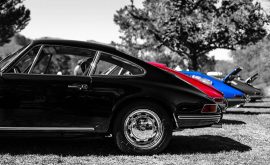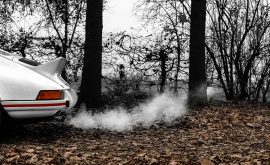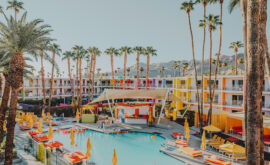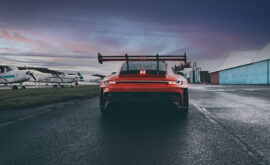E-Type Jaguar, The Lovely British
The idea of the Cars and Roses blog was to tell you about the models that attract me, the models on which I want to tell a story in my own way. After telling you about my favorite, the Targa Porsche, Let’s venture into the British atmosphere and discover together the superb Type-E Jaguar.
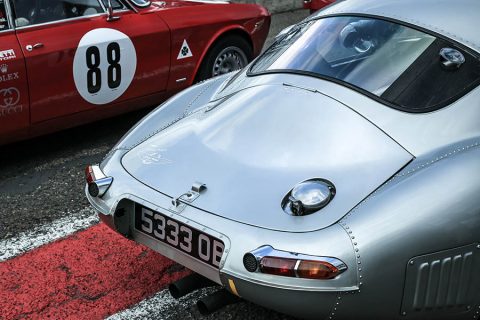
Here is a nice photograph of the back of a E-Type Jaguar we shot recently. You may configure this image here: https://www.carsandroses.com/shop/e-type-jaguar-photograph/
The E-Type Jaguar in details
The car was manufactured from 1960 to 1975 and is offered in three different models: the convertible, the coupe and the 2-2 (extended version)
During these 15 years of production, the Jaguar Type-E has undergone several Face-lift and several mechanical improvements and that is why we are talking about different series. In total, 3 series.
I decided to talk to you about this car because I was lucky one day to be able to drive one several times, it was burgundy, inside Camel, it was just “beautiful”. I always loved the body line of this machine. Clean, long, clean and modern for the time. In addition to models produced for sale in particular, the jaguar-type e also had its moments of glory with its version “type-e race”. Jaguar produced a “lighweight” version of the-e type with the ability to compete with other cars of the time.
Produced in just 12 copies, the lightweight version is lighter than the original models. The body and the engine block are made of aluminum. Due to technical problems, Jaguar subsequently installed cast iron blocks on the following models, 300 horsepower.

Here is a shot of the interior of a E-Type Jaguar. You may configure this photograph here: https://www.carsandroses.com/shop/jaguar-type-e-interior-05-black-and-white-prints/
More about the E-Type Jaguar’s series.
We now return to the different series of type-E. The first series was produced from 1961 to 1967.
It is the series most sought after by purists, an angelic model. From a technical point of view, the series 1 were mounted with a 3.8L 6 cylinder engine until 1964 and then passed on a 4.2L engine (still 6 cylinders). The main features of this series are its front and rear bumpers, set in half and its small buttons on the dashboard that resemble those of an aircraft dashboard. On the 3.8L, there are bucket seats and aluminum on the center console. The 4.2L is equipped with reclining seats and a black center console.
The series one is proposed in coupé and in cabriolet as well as in 2/2 on the models produced from 1966. The second series was produced from 1968 to 1970. The second series, of course, says “modifications”. The biggest market at the time for the Jaguar Type-E was the USA, so it had to do the necessary to update itself from US safety standards and anti-pollution standards. On the level of the look, we notice that there are no more windows just in front of the headlights, so it is a little dug. The bumpers are higher and bigger, the air vent) is also larger. The dashboard has also changed. The car is now more reliable thanks to new improvements (also improved braking and engine cooling system), but this model is less sought after than the series 1 because it is less pure.
Finally, the third series, equipped with a 5.3L V12 engine, is obviously the most powerful “e-type” series, 272 horsepower. This engine is the “improvement” of this 3rd series, in addition to some new aesthetics. Manual boxes are rare to find because the automatic boxes were offered on the Jaguar Type-E series 3.
This is not a E-type but a XJ
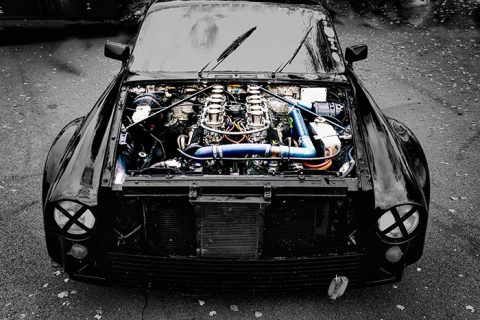
Here is another Cars and Roses’s photograph. A XJ’s Jaguar engine. You can configure this image here: https://www.carsandroses.com/shop/photograph-engine-jaguar-xj/

